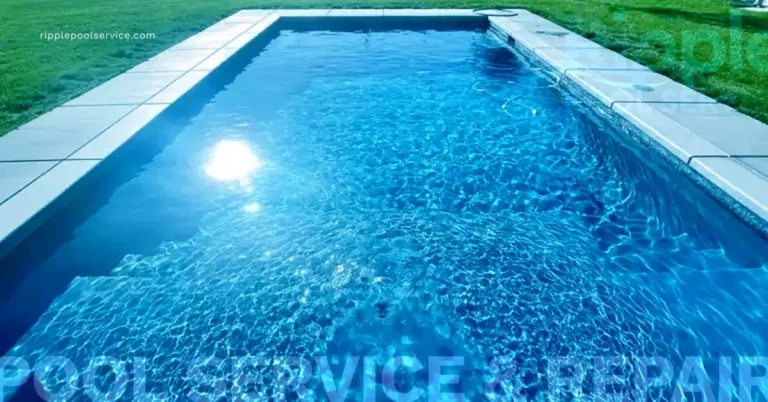Ultimate Guide to Pool Maintenance: Year-Round Care

DIY Pool Cleaning Tips & Tricks
1. Daily and Weekly Cleaning: A Key to a Healthy Pool
Regular cleaning is the foundation of effective pool maintenance. A clean pool not only looks better but also reduces the risk of algae growth, clogged filters, and chemical imbalances.
Daily Tasks
- Skim the Surface: Use a pool skimmer or net to remove floating debris such as leaves, bugs, and twigs. Doing this daily prevents debris from sinking to the bottom, where it’s harder to remove.
- Empty Skimmer Baskets: Check and empty skimmer baskets regularly to ensure optimal filtration and water circulation.
Weekly Tasks
- Vacuum the Pool Floor: Use an automatic or manual pool vacuum to clean the floor. Vacuuming prevents sediment buildup, which can harbor bacteria and algae.
- Brush the Walls and Tiles: Algae and dirt can cling to the walls, steps, and tiles. Use a pool brush to scrub these areas, focusing on corners and areas with reduced water circulation.
- Check the Water Line: Wipe away any scum or buildup at the waterline to keep your pool looking clean and inviting.
2. Mastering Pool Water Chemistry
Maintaining the right chemical balance is crucial for both the safety of swimmers and the longevity of your pool. Imbalanced water can lead to cloudy water, skin irritation, algae growth, and even damage to pool surfaces and equipment.
Key Chemical Levels
- pH Levels: The pH of pool water should be between 7.4 and 7.6. A pH too high can cause scaling and cloudy water, while a low pH can corrode metal components and irritate swimmers.
- Chlorine Levels: Chlorine is essential for sanitizing the pool. Aim for a level of 1–3 ppm (parts per million).
- Alkalinity: Total alkalinity helps stabilize pH levels. Keep it within the range of 80–120 ppm to avoid rapid pH fluctuations.
- Calcium Hardness: Proper calcium hardness (200–250 ppm) prevents scaling and corrosion. Low calcium levels can erode pool surfaces, while high levels can cause scaling on walls and equipment.
- Phosphate Levels: Phosphates, a food source for algae, should be kept between 0–500 ppb (parts per billion). If levels exceed this range, consider using a phosphate remover to prevent algae growth.
Testing and Adjusting
- Testing Frequency: Test your pool water at least 1-2 times per week, and after heavy rain or high usage.
- Adjusting Levels: Use pool-grade chemicals to correct imbalances. For example:
- Add a pH increaser or reducer to fine-tune pH levels.
- Use calcium increasers to raise hardness levels.
- Apply phosphate removers if phosphate levels exceed 500 ppb.
- Shock Treatments: Shock the pool weekly or after heavy use to eliminate contaminants and maintain clear water.
3. Optimizing Water Circulation and Filtration
Water circulation and filtration are critical for maintaining clear and healthy pool water. Stagnant water can become a breeding ground for bacteria and algae, so it’s essential to keep it moving.
Pump and Filter Basics
- Pump Operation: Run your pool pump for 8–12 hours daily, especially during peak swimming season. This ensures that the water circulates through the filter and is properly sanitized.
- Filter Maintenance: Clean or backwash your pool filter regularly to prevent clogs. The cleaning frequency depends on your filter type:
- Sand Filters: Backwash when the pressure gauge reads 8–10 psi above the normal range.
- Cartridge Filters: Clean the cartridge every few weeks, or as needed, based on water clarity.
- Diatomaceous Earth (DE) Filters: Backwash and recharge the filter with fresh DE powder as recommended by the manufacturer.
4. Preventing and Addressing Algae Growth
Algae growth is one of the most common challenges for pool owners. It not only affects the pool’s appearance but also creates a slippery, hazardous surface.
Types of Algae
- Green Algae: The most common type, often caused by poor circulation or low chlorine levels.
- Black Algae: Stubborn and difficult to remove, it forms dark spots on pool surfaces.
- Mustard Algae: Yellowish in color, this algae typically grows in shady areas.
Prevention Tips
- Maintain Proper Chemistry: Keep chlorine levels and pH balanced to prevent algae from taking hold.
- Use Algaecides: Apply an algaecide as a preventive measure, especially after heavy rains or increased pool use.
- Brush and Vacuum Regularly: Regular cleaning disrupts algae spores before they have a chance to grow.
Treatment
- Shock Treatment: Apply a chlorine shock treatment to kill algae. Follow up with thorough brushing and vacuuming.
- Specialized Algaecides: For black algae or mustard algae, use targeted treatments designed for those specific types.
5. Inspecting and Maintaining Pool Equipment
Your pool’s mechanical components—such as the pump, heater, and filter—work together to keep the water clean and comfortable. Regular inspections and maintenance can save you from costly repairs down the line.
Routine Inspections
- Pump and Motor: Listen for unusual noises, check for leaks, and ensure the pump is running efficiently.
- Heater: Test the heater periodically, especially before cooler weather. Remove debris and check for rust or corrosion.
- Skimmers and Baskets: Clean skimmer and pump baskets weekly to prevent blockages.
Preventive Maintenance
- Inspect Pool Surfaces: Look for cracks, chips, or other signs of wear. Addressing small issues promptly can prevent more significant problems.
- Check Pool Equipment Connections: Ensure hoses and fittings are secure and free from leaks.
6. Seasonal Maintenance: Preparing for Changes
Pool maintenance requirements can vary depending on the season. Adapting your routine to these changes ensures your pool stays in excellent condition year-round.
Summer
- Increase pump operation to handle higher usage.
- Test water chemistry more frequently due to increased swimmer load and warmer temperatures.
Fall
- Skim leaves and debris daily to prevent clogging the filtration system.
- Consider installing a pool cover to reduce maintenance as temperatures drop.
Winter
- If closing the pool for the season, lower the water level, add winterizing chemicals, and cover the pool securely.
- For pools that remain open, reduce pump operation and monitor chemical levels periodically.
Spring
- Remove the pool cover and clean the pool thoroughly.
- Shock the water and test all equipment to ensure everything is functioning properly.
7. Troubleshooting Common Issues
Even with diligent maintenance, problems can arise. Knowing how to troubleshoot common pool issues can save time and frustration.
Cloudy Water
- Cause: Imbalanced chemicals, dirty filters, or poor circulation.
- Solution: Test and balance water chemistry, clean the filter, and run the pump longer.
Algae Blooms
- Cause: Low chlorine levels or poor circulation.
- Solution: Shock the pool, brush affected areas, and adjust chlorine levels.
Unusual Smells
- Cause: High chloramines due to insufficient free chlorine.
- Solution: Shock the pool to break down chloramines and restore balance.




